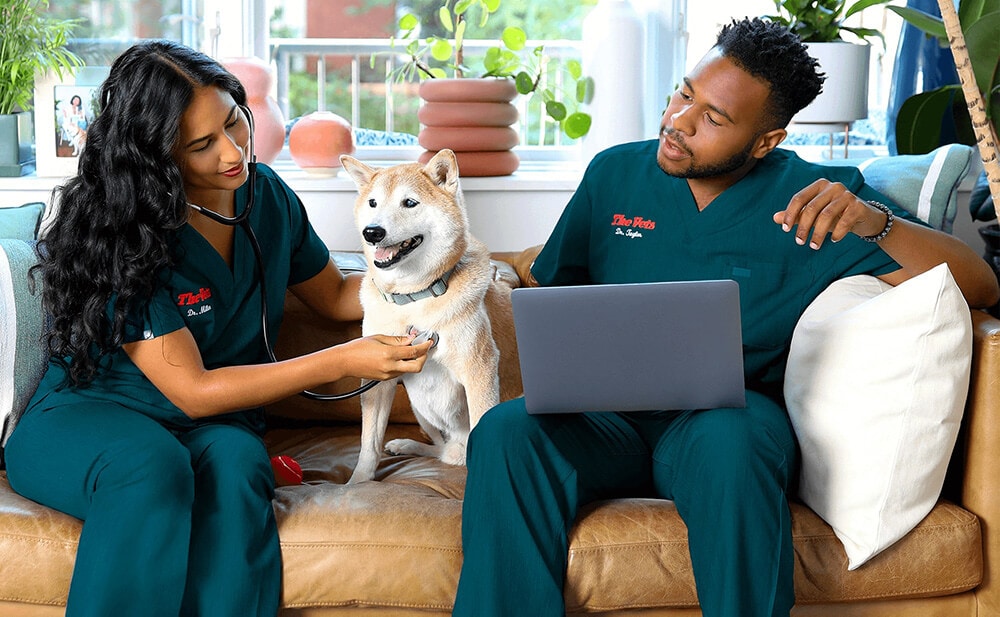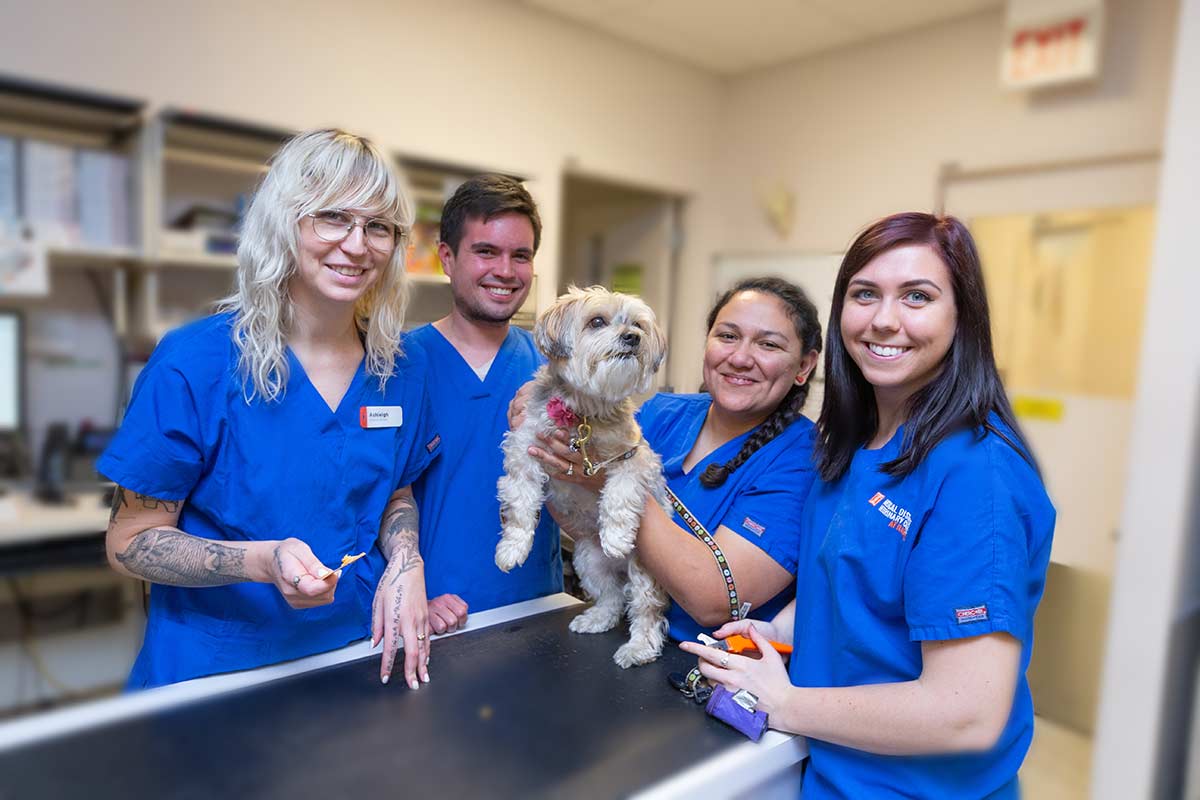A Veterinarian’s Insight Into Long-Term Outcomes of tplo surgery
A Veterinarian’s Insight Into Long-Term Outcomes of tplo surgery
Blog Article
Everything About Vet Surgical Treatment: Understanding the Value of Professional Care for Your Pet dogs
Veterinary surgery is a crucial component of animal medical care. It incorporates different procedures, from routine elective surgical procedures to immediate interventions. Comprehending the details of these surgical procedures can assist animal proprietors make informed decisions. The prep work, execution, and recuperation stages are crucial for making certain the wellness of pets. With correct understanding, owners can browse the complexities of veterinary treatment. What variables should be taken into consideration before a pet dog goes through surgical procedure?
Kinds Of Vet Surgeries
When a family pet needs surgical intervention, recognizing the numerous sorts of veterinarian surgeries can help pet dog owners make notified decisions. Veterinary surgeries can be broadly categorized into three main types: elective, urgent, and emergency surgical procedures. Elective surgeries, such as spaying or neutering, are planned treatments that are not immediately serious. Urgent surgical treatments, like those for foreign body removal, must be executed quickly but are not deadly in the moment. Emergency situation surgical treatments, such as those addressing serious trauma or internal bleeding, are essential and need prompt attention.Additionally, surgical procedures can vary in intricacy, ranging from minimally intrusive laparoscopic treatments to a lot more considerable open surgical procedures. Each kind of surgical treatment carries its very own risks and recovery procedures. Understanding these groups enables family pet proprietors to engage in purposeful conversations with vets, causing better outcomes for their beloved pet dogs.
Preparing for Your Pet dog's Surgical procedure
Planning for a pet dog's surgical procedure involves an extensive checklist to assure all basics are covered. Efficient communication with the veterinarian is vital for comprehending the treatment and any type of necessary pre-operative steps - tplo surgery for dogs. In addition, having clear post-operative care guidelines will certainly help owners offer the best assistance for their recouping pet dogs
Pre-Surgery Checklist Basics
Ensuring a smooth surgical experience for a family pet requires careful preparation and focus to detail. A pre-surgery list is essential for pet dog owners to follow. Verifying the arranged surgical procedure date and time is important. Owners ought to likewise verify that their pet dog has actually fasted according to the veterinarian's directions, usually for 8-12 hours prior to surgery. Collecting necessary medical records, consisting of vaccination background, is necessary for the veterinarian's evaluation. It is additionally suggested to prepare a comfy space at home for the animal's healing after surgery. Proprietors should have a strategy for transport to and from the vet center, making sure that the animal is safe and comfortable throughout the trip. Adhering to these actions can substantially boost the surgical experience.
Communicating With Your Vet

Effective communication with the vet is vital for an effective medical experience for family pets. Owners ought to be prepared to discuss their pet dog's clinical background, consisting of any type of pre-existing conditions, drugs, and allergies. This details helps the vet examine dangers and tailor the medical plan appropriately. In addition, pet dog owners must ask inquiries relating to the treatment, anesthesia, and anticipated results to ensure they fully understand the process. Making clear any type of questions can alleviate anxiety for both the pet and the proprietor. It is additionally crucial to connect any type of behavioral adjustments or worries observed in the pet dog leading up to the surgery. Eventually, clear discussion promotes trust and cooperation, guaranteeing that animals get the best possible care throughout their medical trip.
Post-Operative Treatment Recommendations
After reviewing the surgical procedure with the vet, pet owners ought to concentrate on post-operative care guidelines to facilitate a smooth healing for their family pets. These directions usually include checking the medical site for indicators of infection, such as redness or discharge. Animals might need to be kept one's cool and constrained to avoid too much motion that can interrupt recovery. Discomfort management is essential, so owners must comply with the veterinarian's support on administering medicines. Furthermore, nutritional limitations may be advised to prevent stomach trouble. Routine follow-up visits are essential to assure correct healing and deal with any type of worries. By sticking to these post-operative treatment guidelines, pet dog owners can significantly add to their family pet's recuperation and general wellness.
The Surgical Process Explained
The medical process for pets encompasses crucial steps that ensure their security and recovery. Pre-surgery prep work are important for lessening risks, while post-operative care guidelines play a vital function in advertising recovery. Understanding these components helps pet dog owners navigate the medical experience better.
Pre-Surgery Preparations
Prior to an animal goes through surgical procedure, a number of essential prep work must take location to ensure a risk-free and effective read more treatment. A comprehensive vet assessment is important to evaluate the animal's general health and wellness and recognize any prospective risks. This may include blood examinations, imaging, or various other diagnostics. The veterinarian will also talk about anesthesia alternatives tailored to the pet's details demands. Additionally, pet proprietors are commonly instructed to withhold food and water for a specified time prior to surgical treatment to lessen the risk of complications throughout anesthesia. It is very important for proprietors to supply a total medical history, including any kind of drugs or allergies, guaranteeing the medical team has all required info. Appropriate communication and adherence to pre-surgery guidelines can greatly boost the outcome of the treatment.
Post-Operative Treatment Guidelines
Correct post-operative care is important for making certain a pet dog's healing adhering to surgery. After the procedure, pet dogs should be monitored carefully for any signs of complications, such as excessive blood loss, swelling, or uncommon actions. It is very important to adhere to the vet's guidelines regarding medicines, including painkiller and anti-biotics. Pets need to be kept in a quiet, comfy setting to lower stress and anxiety and promote recovery. Restricting activity is important; short, leashed strolls might be required, yet jumping or running must be avoided. Normal follow-up appointments ought to be scheduled to examine the healing procedure. Additionally, the medical website needs to be maintained tidy and dry, with any kind of indications of infection reported to a vet quickly. Sticking to these standards enhances healing results.
Anesthetic and Discomfort Monitoring
Efficient anesthesia and pain monitoring are important components of veterinary surgical procedure, guaranteeing that family pets continue to be comfortable and secure throughout the treatment. Veterinarians analyze each pet's specific requirements, considering factors such as age, weight, health and wellness status, and the sort of surgical procedure being performed.Anesthesia protocols normally include a combination of pre-anesthetic medicines, induction representatives, and inhalant anesthetics, permitting precise control over the pet's degree of awareness. Surveillance throughout surgery is crucial; vets continuously observe essential indications to address any potential issues promptly.Pain monitoring techniques may entail opioids, non-steroidal anti-inflammatory medications (NSAIDs), and anesthetics, tailored to the family pet's certain situation. This multifaceted strategy aids reduce pain and promotes a smoother surgical experience. By prioritizing effective anesthesia and pain monitoring, veterinary professionals enhance the general welfare of pet dogs undergoing medical procedures, ensuring they get the greatest standard of treatment.
Post-Operative Treatment and Healing
Following surgery, the focus moves to post-operative care and recuperation, which is essential for making sure an animal's secure go back to typical activities. Throughout this period, pet dogs require a quiet, comfy environment to help healing. Owners need to closely check their animals for any kind of indicators of pain or unusual behavior.Veterinary guidelines frequently consist of certain guidelines associated with medicine administration, wound treatment, and nutritional modifications. It is important to stick to these referrals to decrease difficulties and promote recovery. Animals may require to be restricted from energetic activities, such as running or leaping, throughout their healing period (tplo surgery).Regular follow-up appointments with the vet enable surveillance of the pet's progress and timely adjustments to the care strategy. Offering emotional assistance and companionship can also enhance a pet's recovery experience, assisting to ease stress and anxiety. On the whole, attentive post-operative treatment plays a considerable duty in attaining an effective recovery
Identifying Issues After Surgery
Just how can pet proprietors identify issues after surgical procedure? Understanding of certain indications is necessary for making sure the health of pet dogs throughout recuperation. Common signs consist of extreme swelling, inflammation, or discharge at the surgical site, which might indicate infection. In addition, relentless pain, shown by yawping or reluctance to move, ought to motivate immediate focus. Modifications in hunger or water intake can also indicate complications; a decline in these behaviors might indicate pain or distress.Moreover, pet proprietors need to check their animals for any unusual habits, such as lethargy or difficulty breathing, as these can be indications of major problems. Vomiting or looseness of the bowels adhering to surgery might require immediate veterinary evaluation. Recognizing these complications early can considerably affect an animal's recuperation procedure, emphasizing the relevance of vigilance and timely interaction with a veterinarian for any kind of worrying signs and symptoms.
The Role of Veterinary Professionals in Surgical Treatment
Veterinary professionals play a necessary duty in ensuring the safety and success of surgeries for animals, specifically following surgery when checking and treatment are vital. These specialists consist of vets, vet specialists, and support team, all of whom contribute specialized abilities to the medical process.Before surgery, veterinarians perform detailed evaluations to evaluate the animal's health, ensuring that any hidden problems are handled. Throughout the procedure, the medical group supplies anesthesia, maintains clean and sterile settings, and monitors key indicators, very important for minimizing risks.Post-operative treatment is just as significant; vet specialists observe for difficulties, take care of pain, and overview owners on healing practices. Their proficiency enables them to recognize early indicators of distress or infection, ensuring timely treatment. Eventually, the joint efforts of veterinary experts in surgical care cultivate a risk-free environment, advertising the well-being of family pets throughout the surgical trip.

Regularly Asked Inquiries
Exactly how Do I Pick the Right Vet Cosmetic Surgeon for My Pet dog?
Picking the appropriate veterinary doctor entails investigating qualifications, reviewing evaluations, and examining the clinic's atmosphere. It is crucial to review the doctor's experience with particular treatments and their interaction style when making a decision.
What Prevail Misconceptions About Veterinarian Surgeries?
Common misconceptions regarding vet surgeries consist of ideas that they are always dangerous, unnecessary, or for emergency situations. Lots of pet dog owners undervalue the advantages of preventative procedures and the skill associated with veterinary surgical treatment.
Exactly How Much Will My Pet dog's Surgical treatment Cost?
The cost of a family pet's surgery can vary significantly based on factors such as the kind of procedure, the veterinarian's experience, and geographical place (canine tplo surgery). Typically, costs vary from a couple of hundred to a number of thousand bucks

Can My Animal Eat Prior To Surgical Procedure?
Before surgical treatment, it is generally suggested that animals avoid consuming for a certain period. This fasting assists reduce the risk of complications during anesthetic. Proprietors need to consult their vet for precise directions customized to their animal's requirements.
Suppose My Animal Has Pre-Existing Wellness Issues?
When a pet has pre-existing wellness conditions, it's essential for the veterinarian to evaluate these factors prior to surgical treatment. This examination guarantees ideal preventative measures are taken, decreasing risks and enhancing the pet dog's general safety and security throughout the procedure.
Report this page